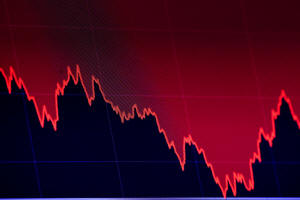|
A
Dow close below 29,439.72 would have confirmed a bear market
that began from that record, according to a widely used
definition. The Dow fell 486.27 points, or 1.62%, to end at
29,590.41.
The Dow is the only one of the three main indexes not to have
bear market status. The S&P 500 notched that grim milestone in
June and the Nasdaq in March.
The renewed selling pressure in markets came in a week that saw
the U.S. Federal Reserve raise interest rates by three-quarters
of a percentage point for a third straight time and a vow to
keep it going until inflation is under control.
It has been a tumultuous year for Wall Street, plagued by
worries about Russia's invasion of Ukraine, an energy crisis in
Europe and the end of easy money policy globally.
The S&P 500 has lost 23% this year and the Nasdaq has shed 31%.
The last time the three indexes pulled back so sharply was in
2020 during the heights of the pandemic selloff.
Heightened fears of a U.S. economic downturn next year and its
impact on corporate profits has prompted brokerages to downgrade
their year-end targets for the S&P 500.
(Reporting by Medha Singh in Bengaluru; additional reporting by
Caroline Valetkevitch in New York; Editing by Shounak Dasgupta,
Shinjini Ganguli, Maju Samuel and Diane Craft)
[© 2022 Thomson Reuters. All rights
reserved.]
This material may not be published,
broadcast, rewritten or redistributed.
Thompson Reuters is solely responsible for this content.

|
|





